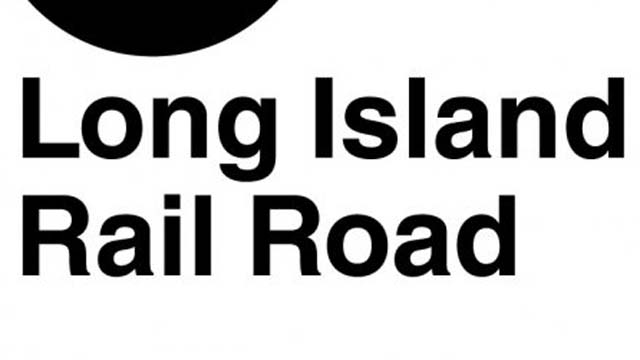
On July 20, hundreds of thousands of people will be left without their regular mode of transportation if the Long Island Rail Road goes ahead with the strike they’ve threatened.
If a strike happens, 5,400 railway workers will walk out on their jobs, abandoning the average of 300,000 commuters they serve each day.
According to the NY Daily News, the strike may begin as early as 12:01 a.m. on Sunday.
Here is what we know about the negotiation process and the contingency plans that have been put into place.
1. The LIRR & MTA Haven’t Come to an Agreement
With the strike deadline 6 days away, LIRR union officials are "proceeding with strike plans" http://t.co/FZTfoL6EVS pic.twitter.com/PUou0vOnkw
— amNewYork (@amNewYork) July 14, 2014
The opposing sides met in December and May to present their cases. Two emergency mediation boards sided with the unions, and called for the MTA grant to 17% raises over six years.
They also thought that workers, who presently do not contribute towards their healthcare, should pay 1% of base pay early in the contract with that rising to 2.25%.
However, at this point in time, there seems to be no form of settlement.
Long Island Rail Road chief negotiator Anthony Simon released this statement on Monday:
I regret to report that negotiations have collapsed with the MTA, and all eight unions are now proceeding with strike plans for July 20.
MTA Chairman Tom Prendergast, agreed, saying, “There truly is a gulf.”
2. There Are 350 Buses Ready
MAP: Shuttle bus service to subway stations in event of #LIRR union strike. Details: http://t.co/HujQGoyNDb pic.twitter.com/eefBCQMgFv
— LIRR (@LIRR) July 14, 2014
These buses will transport commuters from eight locations in Nassau and Suffolk to three major subway stations in Queens.
The stations will be in Freeport, Bellmore, Nassau Community College, Seaford, Manhasset, Deer Park, Ronkonkoma, and Hicksville.
This will take care of approximately 15,000 customers. However, the shuttles will only run during rush hours, which means they will travel to New York City between 4-7 a.m. and come back to Long Island between 3-7 p.m.
If commuters use this shuttle option, they will need to account for the severe delays and overcrowding on the buses and subways in Queens.
On July 14, the LIRR posted the map above on Twitter, which illustrates the shuttles buses’ routes.
3. There’s a Carpooling Site
#LIRR Contract Talks "Collapse" as #Strike Deadline Nears http://t.co/Z8E3Amx7uk pic.twitter.com/52JCNYRiHu
— NY1 News (@NY1) July 14, 2014
In the event of a strike, the HOV-lane requirement on the Long Island Expressway of two people per car will be bumped up to three.
Commuters can find fellow riders at this site: 511ny.org/rideshare.
According to News 12, these are the carpool staging areas:
Valley Stream State Park
Hempstead Lake State Park
Bethpage State Park
Farmingdale State College
Belmont Lake State Park
Sunken Meadow State Park
Heckscher State Park
Valley Stream State Park
There will also be a free ferry service from Glen Cove to the East 34th Street Station in Midtown Manhattan, which could transport about 1,000 people.
The ferry will only operate three westbound runs during morning peak (4 a.m.-7 a.m.) and three eastbound runs during evening peak (3 p.m. and 7 p.m.).
The MTA arranged for two park and ride locations, at Citi Field and Aqueduct Race Track.
4. Cuomo Doesn’t Want to Get Involved
Shd contract talks w the LIRR, which doesn't cross any states lines, be done by Congress or is this failure to lead? pic.twitter.com/PlQOOUao1S
— changeNYS.org (@changeNYS) July 8, 2014
Governor Cuomo made it clear that he will not step in since he believes it’s the responsibility of Congress.
“A strike is just not an option and would be a terrible failure by both the unions and the MTA,” he said on July 8.
5. There Was a Strike in ’94
Long Island Rail Road Workers To Strike For First Time In 20 Years https://t.co/hoFyMWPFu2 #p2 #tcot pic.twitter.com/989CqnaSdC
— Hakkapip (@Hakkapip) July 14, 2014
In 1994, the strike began on Friday, June 17, and ended the next day.
Today, with many people working from home, a strike will undoubtedly be easier for the public to handle.
MTA Chairman and CEO Thomas F. Prendergast said in a statement:
When the LIRR unions went on strike in 1994, Long Islanders had very limited options. There were no park-and-ride lots, no ferries, no real-time monitoring, no telecommuting. Today, the MTA has a far stronger, more robust, multifaceted plan. Working with the State and elected officials from across Long Island and the City of New York, we are providing more shuttle buses, thousands of parking spots near subway stations, a ferry service, real-time traffic management and real-time parking monitoring.